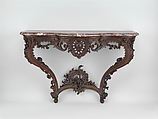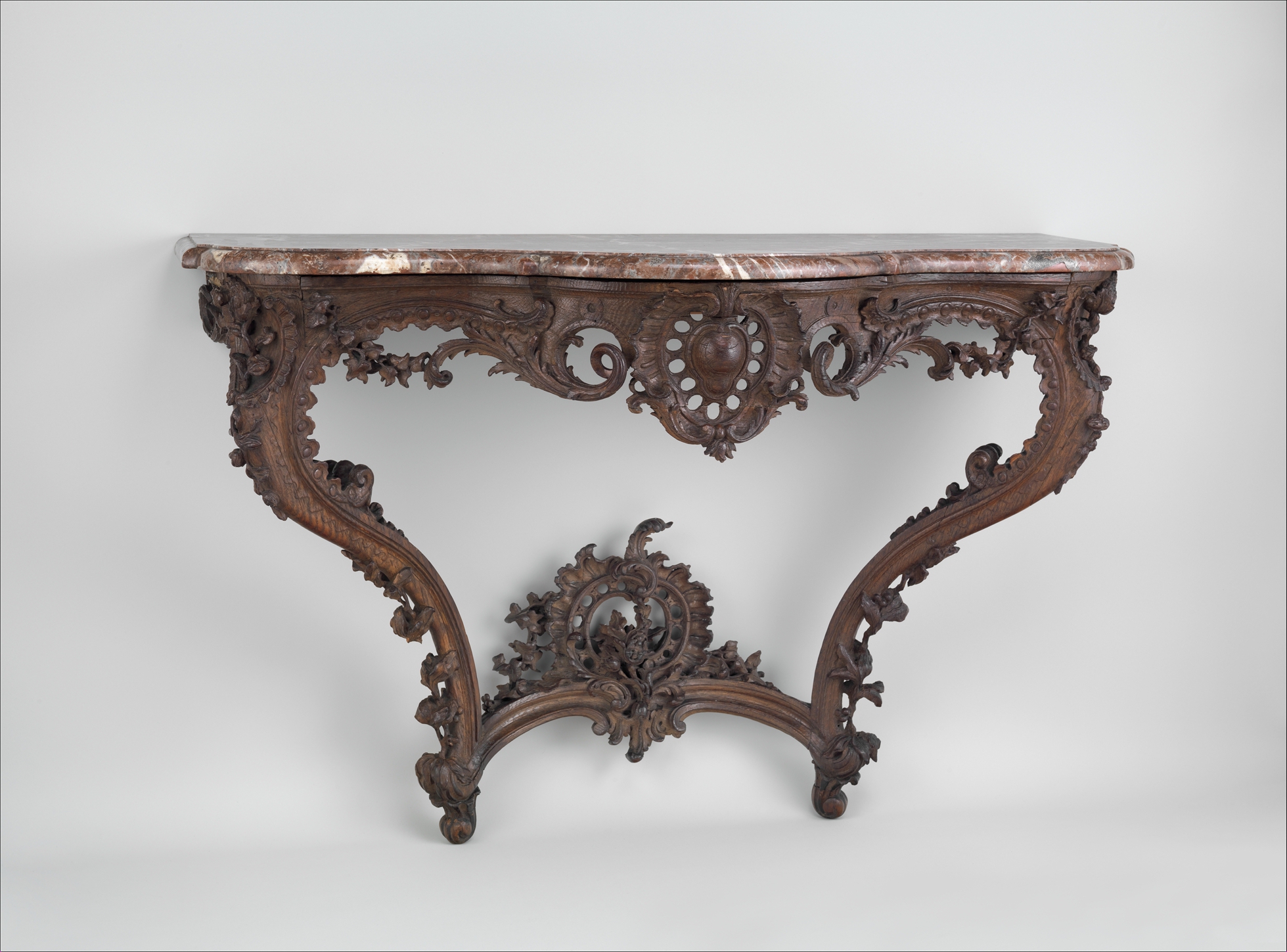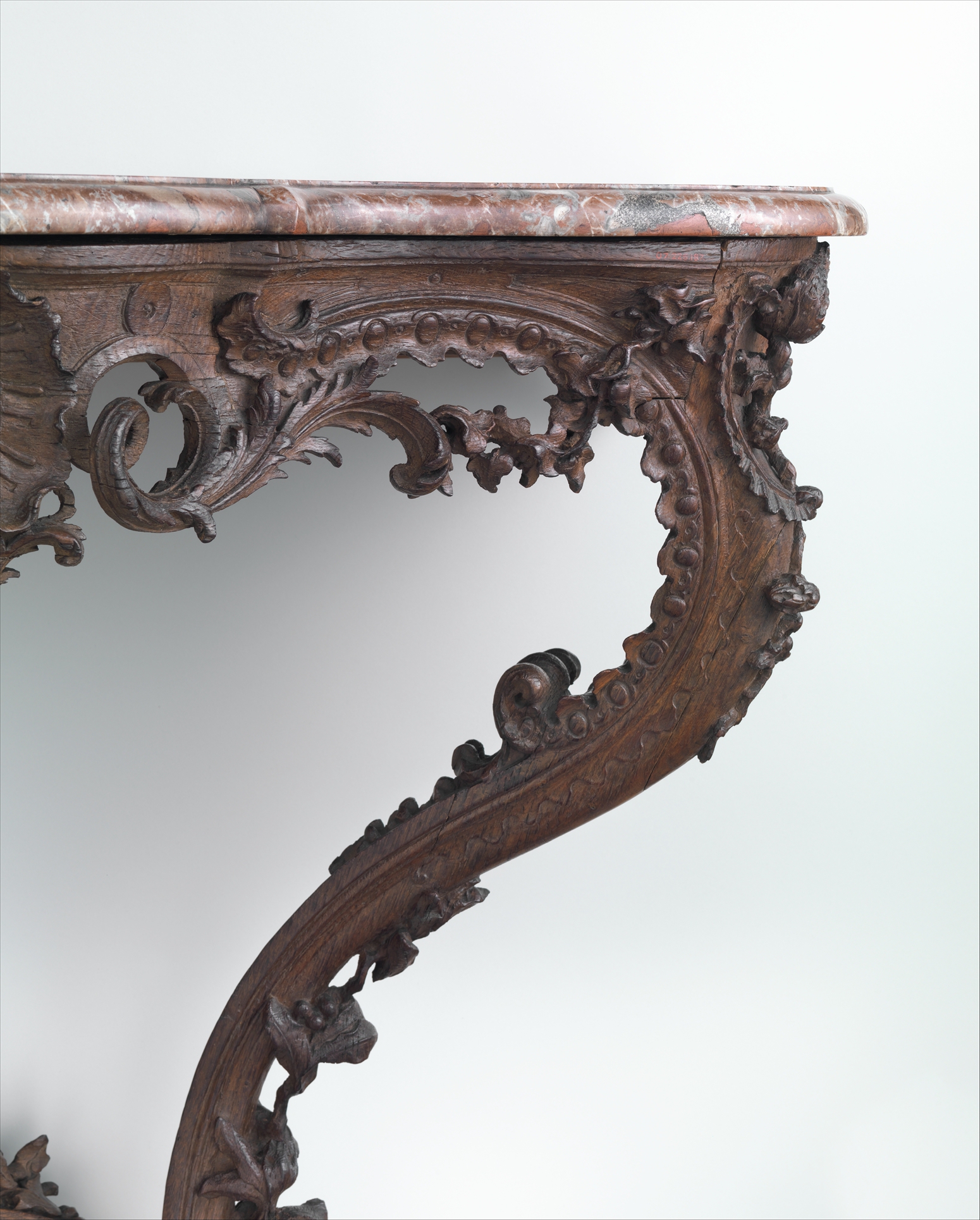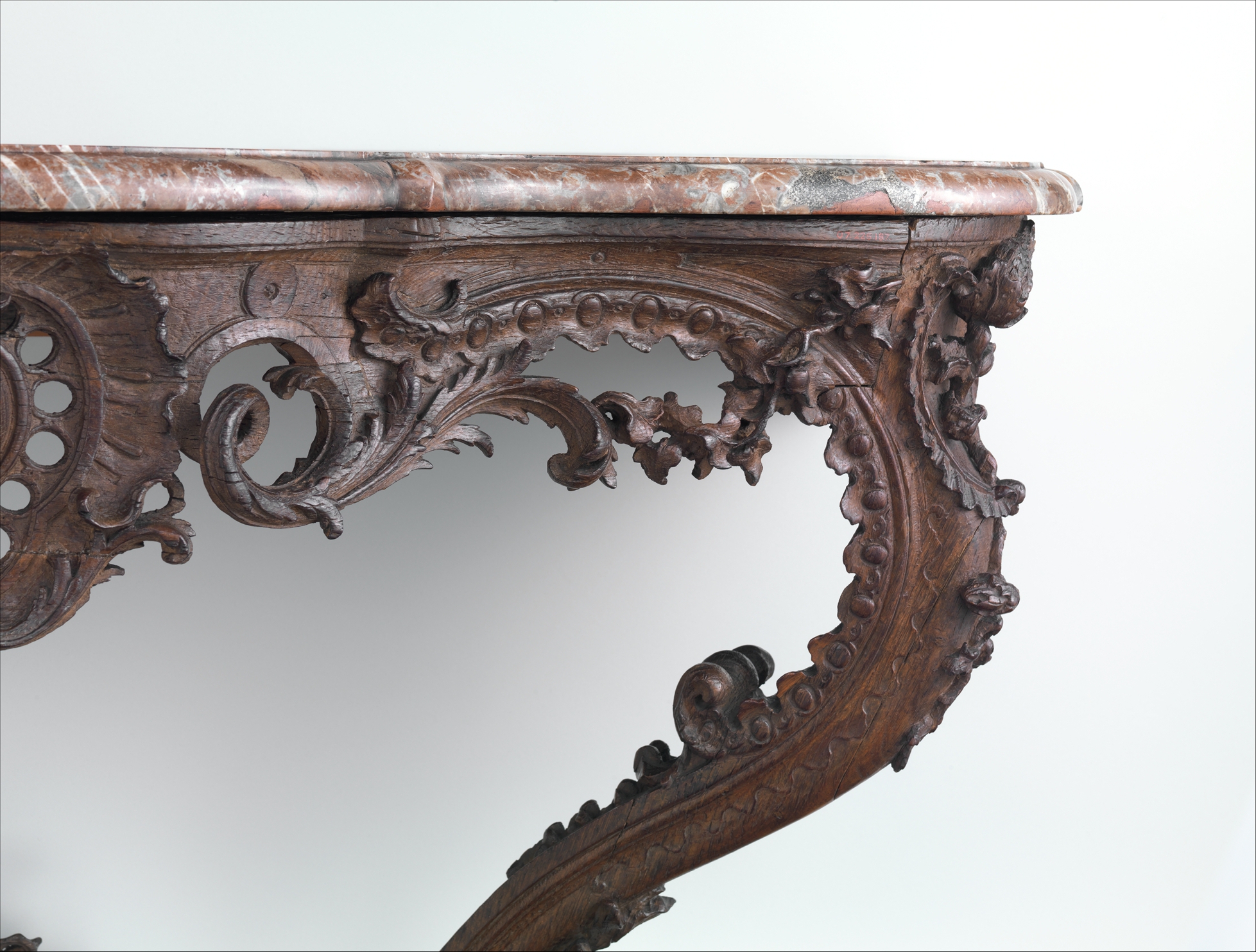Console table
Not on view
Supported on one or two legs, console tables need to be attached to the wall for stability and are considered to be part of the interior decoration of a room. They were made by a special group of joiners, menuisiers en bâtiments (litt. building carpenters) responsible for the fixed elements in the interior such as paneling, pier glasses and console tables. Unlike other members of the guild, these craftsmen were not required to stamp their output and for that reason it is rarely known who created such works. The serpentine outline of the table’s apron incorporates an openwork cartouche with a heart-shaped boss in the center surrounded by an asymmetrical rocaille frame and flanked by scrolling acanthus leaves and floral garlands. The doubly curved legs are decorated with floral trails and connected at the feet by an upward curving stretcher embellished in the center with an openwork asymmetrical cartouche of rocaille forms, scrolling acanthus leaves and floral ornament. The table has been compared with designs by Juste-Aurèle Meissonnier (1695-1750), the leading and most extravagant pioneer of the Rococo style in the decorative arts. The asymmetrical cartouches and use of rocaille decoration does reveal quintessential elements of the Rococo style prevalent in Continental Europe from 1730s onward.
This table was part of the model collection of woodwork, paneling and seat furniture of Maison Leys, a successful decorating business, located at the Place de la Madeleine in Paris. Since 1885 the business was directed by Georges Hoentschel who installed the collection in 1903 in a museum-like display at Boulevard Flandrin, Paris. Three years later, Hoentschel sold the collection to J. Pierpont Morgan who gave the panels with the rest of the decorator’s seventeenth and eighteenth century objects to the Metropolitan Museum of Art in 1907.
Due to rights restrictions, this image cannot be enlarged, viewed at full screen, or downloaded.
This artwork is meant to be viewed from right to left. Scroll left to view more.






